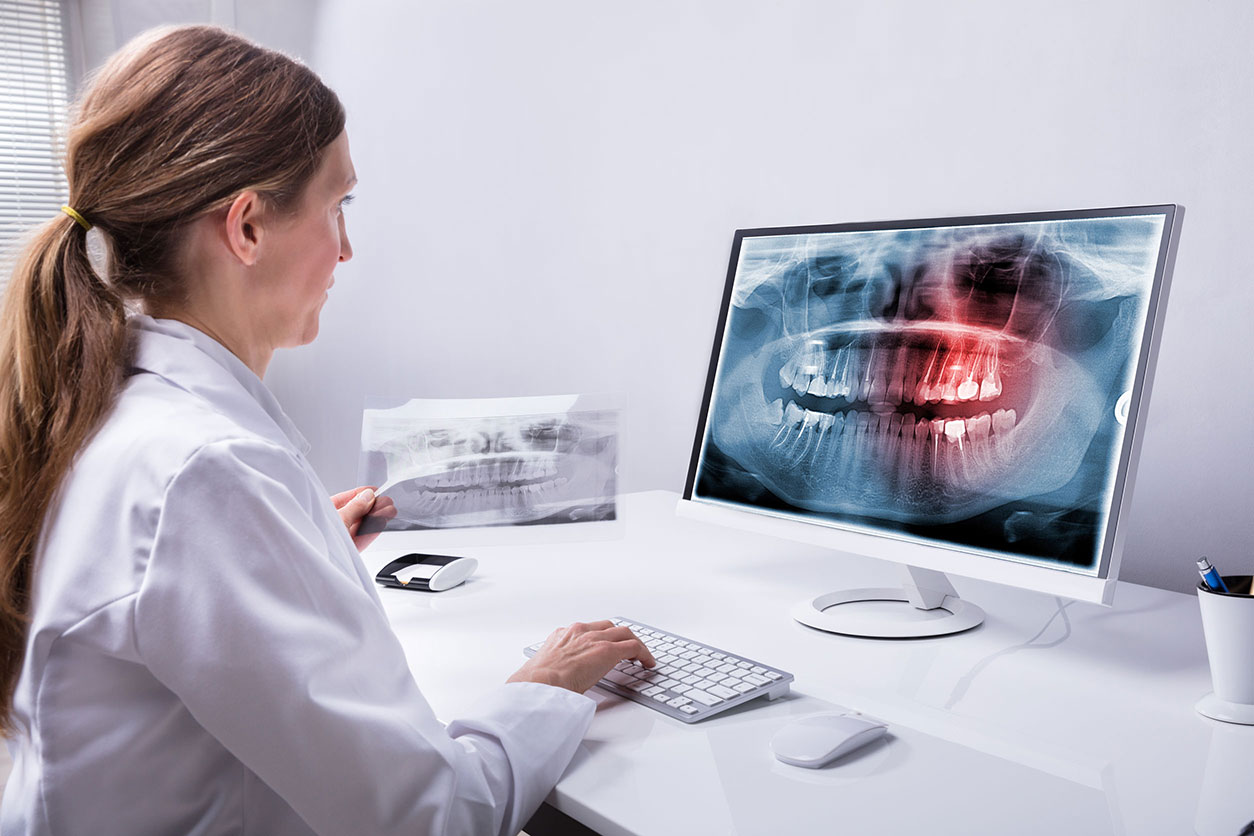
All about third molars
Extraction of wisdom teeth
The third molars, commonly called "wisdom teeth", appear as early as adolescence. Because they have less space in the dental arch than other teeth, they are more at risk of complications, so wisdom teeth sometimes need to be extracted.
They may be either included: not visible in the oral cavity, covered by gum and bone or semi-included: partially visible.
Why and when to remove a wisdom tooth?
Wisdom teeth need to be extracted when there is no room for them to come out normally. Cases include pericoronitis: inflammation of the gum around the partially erupted tooth if there is bone loss or decay on the adjacent tooth. The following symptoms may be experienced: pain in the posterior region of the oral cavity swelling, presence of pus, decreased mouth opening, fever.
What are the precautions to take?
Follow some advice during the first few days to ensure that the post-operative period goes as smoothly as possible: do not smoke, do not spit and avoid mouthwash. Brush your teeth normally and do not eat or drink hot food or beverages. If your jaw is sore, opt for minced food.
Is a work stoppage prescribed?
Generally, there is no work stoppage after the intervention. However, the dentist may stop you for a few days if the procedure was difficult.
How often are the checks carried out?
One week to ten days after the operation, you are called for a check-up to ensure that the wounds are healing properly and to remove the stitches. Additional checks are sometimes necessary.
ALL ABOUT THIRD MOLARS
Extraction of wisdom teeth
Third molars, better known as "wisdom teeth," normally appear in adolescence. But they will disappear in human evolution as jaws get shorter and shorter. As they have less space on the dental arch than the other teeth, they are more at risk of complications (pain, swelling of the cheek, abscess, difficulty in opening the mouth, cavities on adjacent teeth, cyst...), it is therefore sometimes necessary to extract them.
Preliminary analysis
This kind of intervention requires a precise radiographic analysis, using a panoramic X-ray, or even for more precision, a 3D X-ray called Cone Beam. This makes it possible to check the position of the wisdom teeth in relation to their immediate environment: mandibular nerve, sinus, other teeth... , to plan the duration of the operation and to carry out a preoperative prescription if necessary.
Intervention
Wisdom teeth are most often removed in pairs or in one go. The procedure is performed under local anaesthesia, which may be supplemented by conscious sedation with nitrous oxide. Once the tooth(s) are removed, sutures are made which will need to be removed after 1 to 2 weeks.
Surgical suites
Post-operative advice will be given to you orally and in writing, on the feeding and brushing advice to be done in the following days. If you follow this advice and the preoperative prescriptions well, the aftermath is not very painful and a work stoppage is generally not necessary.


